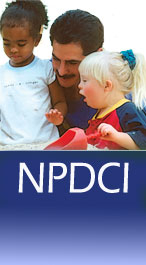Resources to Support Embedded Instruction and Other Naturalistic Interventions
Embedded instruction and naturalistic intervention strategies address specific developmental or learning goals within the context of everyday activities, routines, and transitions at home, at school, or in the community.
Why Do It? (the evidence base)
- Research evidence on embedded instruction for early learning http://www.embeddedinstruction.net/node/18
- Trivette, C. M., Dunst, C. J., Hamby, D. W., & O’Herin, C. E. (2010). Effects of different types of adaptations on the behavior of young children with disabilities. Tots n Tech Research Institute. Research Brief 4(1). http://tnt.asu.edu/files/Adaptaqtions_Brief_final.pdf
Read About It (books, chapters, and articles)
- Grisham-Brown, J., Hemmeter, M. L., & Pretti-Frontczak, K. (2005). Blended practices for teaching young children in inclusive settings. Baltimore, MD: Paul Brookes.
- Grisham-Brown, J., & Pretti-Frontczak, K. (2011). Assessing young children in inclusive settings: The blended practices approach. Baltimore, MD: Paul Brookes.
- Sandall, S. R., & Schwartz, I. S. (2008). Building blocks for teaching preschoolers with special needs. Baltimore, MD: Paul Brookes.
See for Yourself (videos and demonstrations)
- Center on the Social and Emotional Foundations for Early Learning (videos) http://csefel.vanderbilt.edu/
- CONNECT Module 1: Embedded Interventions
http://community.fpg.unc.edu/connect-modules/learners/module-1/introduction
- CONNECT Module 5: Assistive Technology
http://community.fpg.unc.edu/connect-modules/learners/module-5/introduction
- Division for Early Childhood (DEC). (2006). DEC recommended practices toolkits. Missoula, MT: Author.
- Edelman, L. (2001). Just being kids: Supports & services for infants and toddlers and their families in everyday routines, activities & places. Denver: Western Media Products.
- Embedded Learning Opportunities (videos, PowerPoints) http://depts.washington.edu/hscenter/elo
- Project INTEGRATE. (n.d.). Integrating therapies into classroom routine.. Order from Robin McWilliam robin.mcwilliam@siskin.org
Find it Online (websites with additional resources)
- Center on the Social and Emotional Foundations for Early Learning (modules) http://csefel.vanderbilt.edu/
- Embedded Instruction for Early Learning http://www.embeddedinstruction.net/
- CONNECT Module 1: Embedded Interventions
http://community.fpg.unc.edu/connect-modules/learners/module-1/introduction
- CONNECT Module 5: Assistive Technology
http://community.fpg.unc.edu/connect-modules/learners/module-5/introduction

